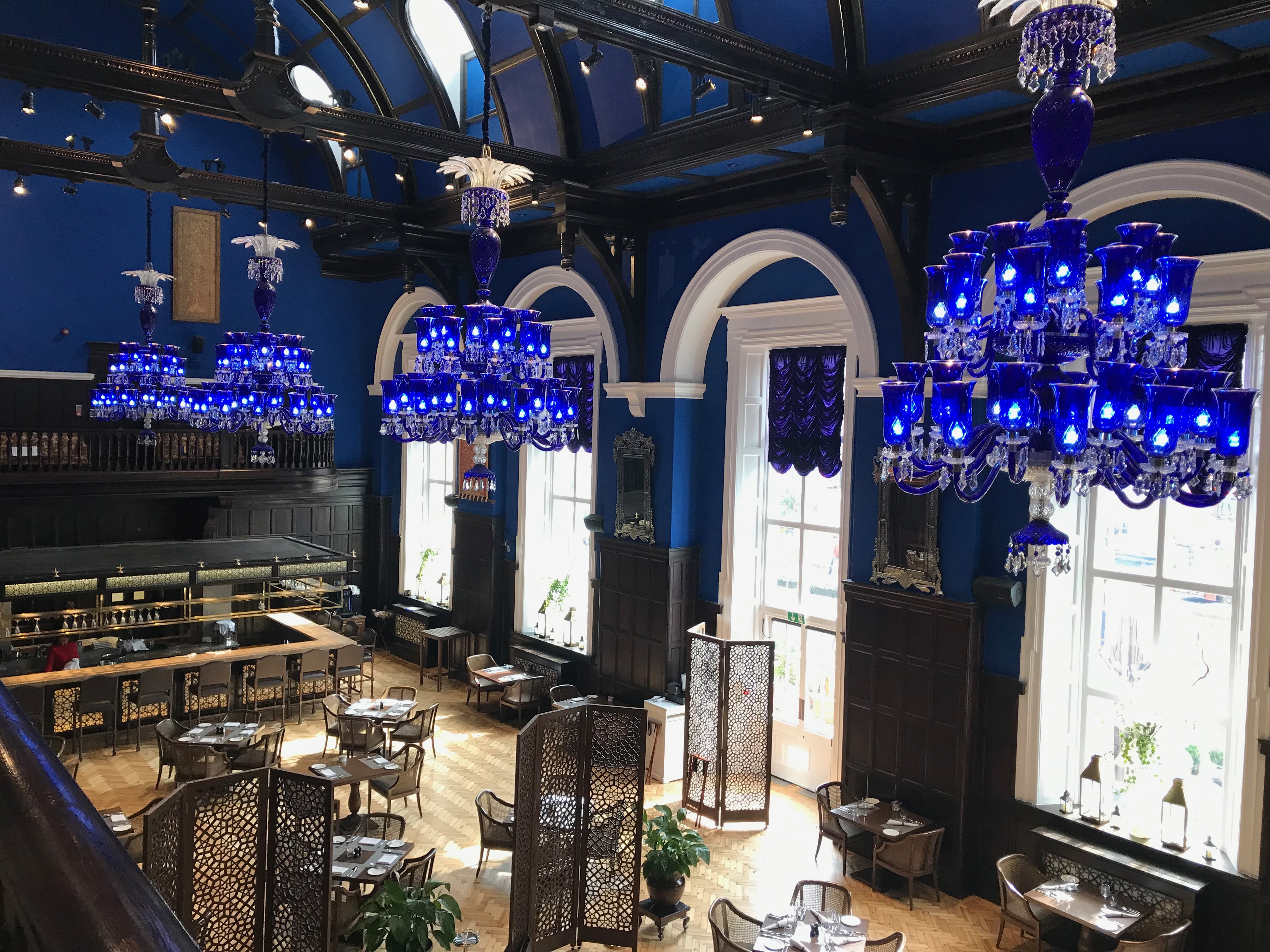
The other day, I spent a night in the LaLit London Hotel, located in a Grade II listed building that was once St. Olave’s Grammar School. It’s a beautiful hotel that spoke to my penchant for the exotic and allowed me to experience first-hand one of the key structural principles of exoticism – what Arjan Appadurai has termed the ‘aesthetics of decontexualisation’. At the LaLit hotel, which is owned by a luxury Indian hotel chain, it manifests itself in the successful combination of an old English boarding school atmosphere with South Asian flamboyance. The once austere wood-panelled assembly hall of the former grammar school was transformed by Archer Humphreys architects and interior designers into the hotel’s dining hall and Baluchi restaurant. The walls and high ceiling are a deep cobalt blue, as are the ornate chandeliers. Both the inspiration for the LaLit London Hotel’s lavish design and many of the exotic objects (silk tapestries in the bedrooms, filigree wooden screens, the chandeliers and star-shaped lamps and much of the furniture) were made in and imported from India. It is precisely this juxtaposition of Indian opulence and English heritage which lends the hotel its exotic allure.
The outside is red brick Edwardian Baroque, designed by the famous British architect Edward William Mountford (who also designed the Old Bailey), the inside looks more like a dazzling Indian palace (and was inspired by Archer Humphreys’ visit to the Red Fort). The aesthetics of decontexualisation, which the LaLit London deftly illustrates, is fundamental to the perception of the exotic, which only emerges in the process of de- and re-contextualisation, displacement and domestication. Europe’s colonial expositions of the late nineteenth and early twentieth centuries,which combined the display of imperial power with ethnological voyeurism,exemplify these concomitant processes. Similarly, collectors and ethnographers put on display anything from exotic taxidermy, over ostrich eggs and the colourful beak of a toucan, to precious Ming vases, or just fragments of exotic objects, retrieved from remote parts of the world in their stately homes. The exotic sensibilities which governed such exhibits, were driven by a fascination with novelty and showed little regard for the objects’ geographic provenance or ethnographic accuracy. Instead, the chief principle that governed such eclectic arrays of foreign objects was their perceived exoticism and their capacity to elicit wonder in the beholder. Royals and aristocrats even shipped live exotic animals from Africa, India and other pockets of empires to Europe and kept menageries of zebras, cheetahs, ostriches, llamas and lemurs on the manicured lawns of their extensive estates. Taking the domestication of these wild animals to the extreme, they tamed and rode ostriches and harnessed zebras, instead of horses, to their carriages.
Of course, the domestication of the exotic at the LaLit London is more restraint and, as a result of globalisation and constant contact with other cultures, we have almost lost our sensibilities for exotic encounters. But at the LaLit London, the British architect and design firm Archer Humphreys (known for their conversion of high-profile heritage sites into luxury hotels), recreated the encounter with the exotic in the heart of London.